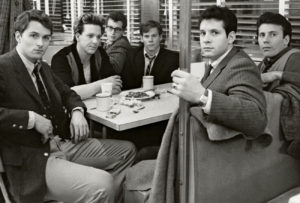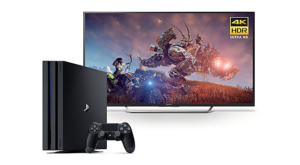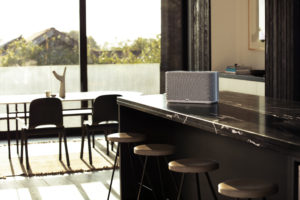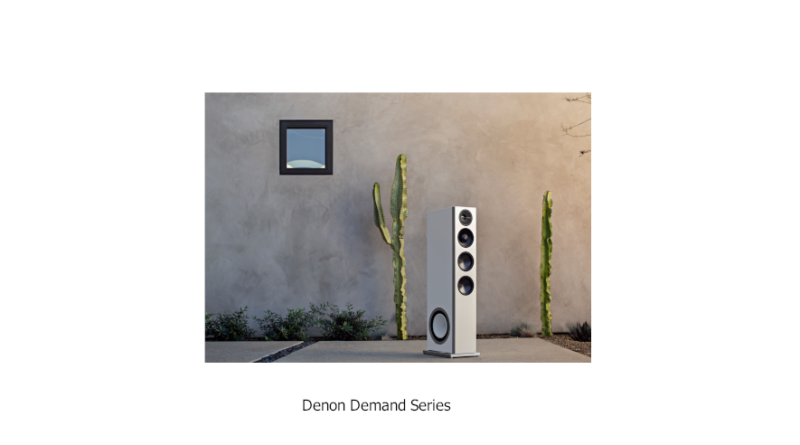One of our core principles here at Technology Designer Magazine is that if a dwelling doesn’t have high-performance audio and video systems, it’s not really a luxury performance home. Music, movies, TV shows, sports — all are made more enjoyable when delivered by equipment that can closely approximate what the content creators experienced in the studio. Interestingly enough, a lot of theoretically great systems don’t live up to their potential, as they are not being fed the highest quality source material.
Shrevie and Beth
There’s a great scene in the movie Diner. The story is set in 1959, and the young newlywed couple Shrevie (played by Daniel Stern) and Beth (Ellen Barkin) are having an argument because she does not properly categorize and file his records after she plays them. She gets very frustrated with being harangued, and in exasperation finally says, “I just want to listen to the music.”
Before he storms out of their apartment, he says, “Every one of my records means something! The label, the producer, the year it was made. Who was copying whose style . . . who’s expanding on that — don’t you understand? When I listen to my records they take me back to certain points in my life, OK? . . . You! The first time I met you? Modell’s sister’s high school graduation party, right? 1955. And “Ain’t That A Shame” was playing when I walked in the door.”
I must admit that I relate to both Shrevie and Beth.

I’ve always been seriously into music and movies, as I believe to my core that these are two of the greatest art forms that make life worth living. I used the money from my first summer job after 8th grade to buy my first component stereo system. When hi-fi VCRs came out, I was an early adopter, setting up a rudimentary home theater system before the term even existed. Over the years I’ve amassed a fairly large collection of records, cassettes (!), CDs, old videotapes, DVDs, Blu-ray Discs and more. And I’ve now been writing about audio/video equipment for nearly 25 years. So I understand Shrevie’s obsessiveness.
However — and I’m almost embarrassed to admit this — I’m not natively a gearhead. I’ve made myself knowledgeable about products and technologies only because I want to put together systems that best deliver the emotional content and intent of the artists — and to help others do the same. But I’m not always into esoteric conversations about product specifications and A/V minutia. Like Beth, most of the time I just want to listen to the music.
Here’s the thing, though, and the whole point of this introduction: If music and movies are important to your clients, they need to be aware of the latest technological breakthroughs and make sure they are properly implemented. With this in mind, I thought I would tell you a little bit about my own upgrade path I embarked upon in the past year.
4K or Not 4K
For years, I’ve been seeing 4K Ultra HD video content at trade shows and local electronics dealers. A 4K picture has four times the number of pixels of High Definition (HD), and I’ve always been blown away by the clarity, detail, and richness of the colors.
I bought my first 4K TV about three-and-half years ago — the least expensive 55-inch model in Sony’s advanced XBR Series. Like most people, I just had it hooked up to an HD cable box (as well as the Blu-ray player on my PlayStation), so I was really only receiving HD content upconverted to 4K. Upconverting a picture means there is an artificial intelligence (AI) processor chip in the TV that simulates 4K images based on 1K input – it approximates what that 1K content would be if it were native (or original) 4K content.

Now, this picture looks pretty darn good, but it’s not the same as real 4K. This didn’t concern me too much, as at that time there wasn’t a whole lot of native 4K content available. But when I began to read about more and more shows, movies and sporting events coming out in 4K, I decided to start upgrading my system.
Back when I bought my 55-inch Sony, I almost immediately regretted not getting a larger model. Can’t believe I made this rookie mistake, as I’ve been in the consumer electronics business long enough to know that no one ever says, “Gee, I wish I’d gotten a smaller TV.” So a little over a year ago I bought a new Sony XBR set which was not only bigger (65-inches), but also had a more advanced processor for deeper blacks, more vibrant colors and smoother motion in fast-action scenes.
I also purchased a new Denon A/V receiver (my previous Integra model, which I loved, was about six years old and was not compatible with 4K signals) and a Sony 4K Blu-ray player. Once I got everything hooked up, I popped in a 4K Blu-ray of GoodFellas, and my wife and I were entranced by the presentation. I’ve seen this movie a million times, principally because when I’m channel-surfing and I land on it, I always watch ‘til the end. But seeing it in 4K gave me a feeling I hadn’t had since I saw it in the theater many years ago. The story, the cinematography, the performances — all just sprang to new life with the clarity of this incredible format.
Of course, in the age of streaming we just don’t use physical media as much as we used to, so I called Xfinity and ordered a 4K-capable cable box (satellite TV customers also need special boxes to receive 4K signals). This has been a revelation, as they have a fairly robust selection of 4K programming from their own on-demand library, an increasing number of sporting events, and, if you have accounts, Amazon Prime, Netflix and other content providers. We especially enjoy the saturated colors and 1950s-1960s ambience of “The Marvelous Mrs. Maisel,” as well as the darkly funny British show “Fleabag.” Again, the elevated sense of realism created by 4K quality really lets you disappear into the story.
High-Resolution Audio: My Experience with HEOS
HEOS by Denon is a wireless music system and infrastructure that can bring streaming music to any room in your house you want. HEOS technology is built in to all the latest Denon and Marantz receivers and processors.

Denon Home Series Wireless Speaker
We’ve had a different wireless streaming music system in our house for five or six years, with speakers in the master bedroom, kitchen and living room, a soundbar for the den, and a small outboard box that brought streaming capabilities to our main listening room/home theater. The sound quality has always been adequate, but this system was not capable of streaming high-resolution audio.
When I upgraded my receiver to a high-end Denon model last year, I just hooked up my existing music streaming box out of habit before I remembered that the new receiver comes with HEOS built in. HEOS is compatible with high-resolution audio (which includes several different formats that offer greater than CD sound quality). This was important to me as I had recently signed up for Amazon Music Unlimited, the new service that streams many songs in hi-resolution.
All I had to do to get HEOS up and running was download the HEOS app for my phone, connect all the music services for which I already had accounts, and start listening! When I choose a song with the app, it automatically turns on my receiver, selects HEOS as the input, and starts playing. When I turn the TV on, it displays the track currently playing, the album cover, and the bit-rate and frequency of the file. And with Amazon Alexa, I can operate numerous functions via voice control.

I earlier mentioned that I have an extensive collection of records and discs, which I still enjoy. But we’re living in the age of streaming, which brings almost unimaginable levels of convenience, and, of course, the ability to instantly access almost any song you can imagine. HEOS supports Spotify, Pandora, Napster, Deezer, TuneIn, iHeartRadio, SiriusXM, TIDAL, Mood:Mix, SoundCloud and Amazon Music. I find myself listening to music more than I have in a long time, and I can thank the ease-of-use and sound quality of HEOS for that.
In addition to enjoying my favorite streaming music services, I can listen to Internet radio, files stored on my hard drive, and even songs on my phone. HEOS uses standard home wireless technology so I can use my existing router without the need for any new equipment such as a bridging device. The wireless range and sound quality are far superior to Bluetooth, and any device on my network running the free HEOS app can control everything.
To sum up, no one has to be a full-blown techie to thoroughly enjoy the high-performance technologies that are now making home entertainment better than ever. Advise your clients that a little research, and/or a long-term relationship with a local A/V dealer who can keep them up to date on the latest and greatest, will pay dividends in their quality of life.


